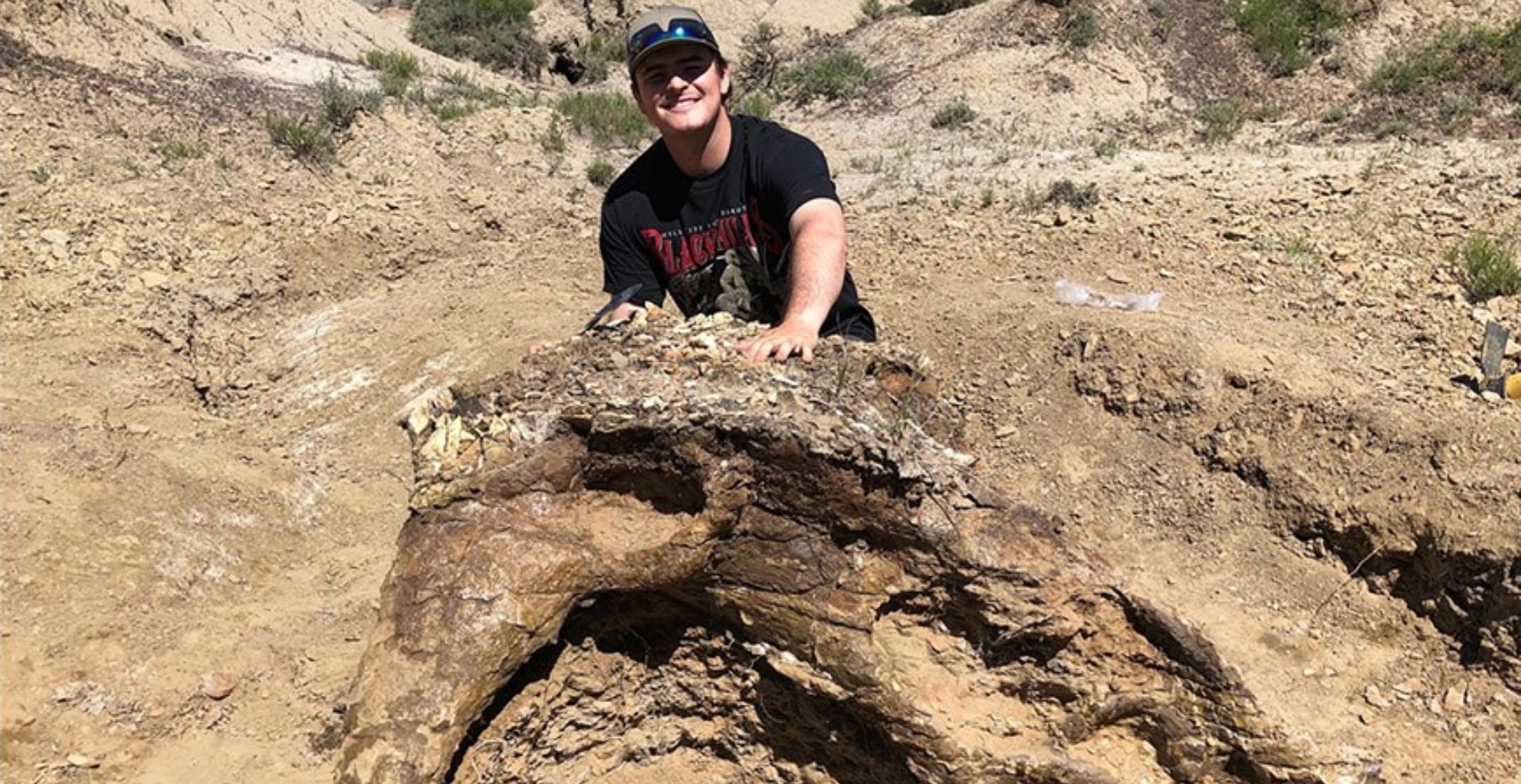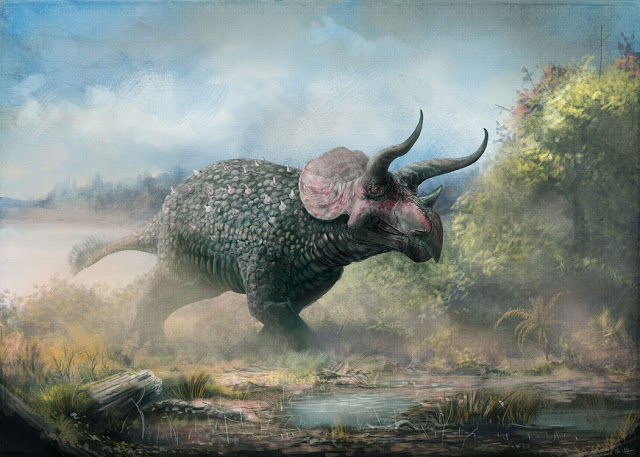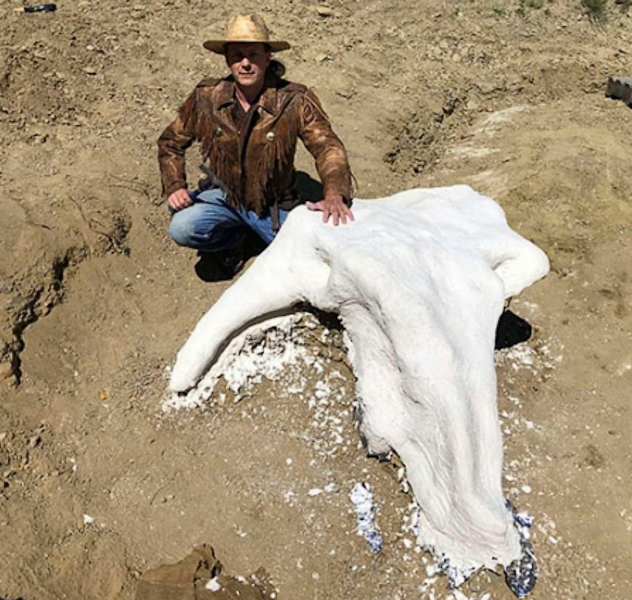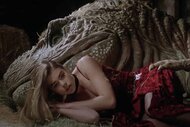Create a free profile to get unlimited access to exclusive videos, sweepstakes, and more!
University student finds colossal triceratops skull in North Dakota's Badlands

Dinosaur fossils seem to be popping up all over, with news arriving earlier this week of a gigantic sauropod thigh bone unearthed in Southwestern France, and now the colossal skull of a prehistoric triceratops being discovered by a university student in the Badlands of North Dakota.
Harrison Duran, an ecology and evolutionary biology student at the University of California, Merced and team members of Fossil Excavators stumbled across this 65-million-year-old specimen while his group was on a two-week paleontology outing in North Dakota. The imposing fossilized treasure was recently unburied at the Hell Creek Formation and has been nicknamed Alice the Triceratops to pay respects to the property owner of where it was found.
“I can’t quite express my excitement in that moment when we uncovered the skull,” Duran announced in a university news release. “I’ve been obsessed with dinosaurs since I was a kid, so it was a pretty big deal.”
Duran and Dr. Michael Kjelland, a biology professor at Mayville State University in North Dakota, founded the nonprofit scientific organization Fossil Excavators to share in their love of dinosaurs and bond over the spirit of discovery.
According to their official website, the "Alice Skull" was found inverted with the base of its pointy left horn partially exposed above the rocky soil. Over the span of a week of exhausting excavation, Alice was carefully stabilized with foil and glue, covered in plaster, then removed from its location in a pickup truck after being wrapped in a soft memory-foam mattress for protection and driven to Kjelland's lab.
The rest of the summer and fall will find Fossil Excavators preparing the magnificent skull for display and research.
“My vision is to have Alice rotate locations,” Kjelland explained to the university. “The goal is to use this find as an educational opportunity, not just reserve Alice in a private collection somewhere so only a handful of people can see her.”
















